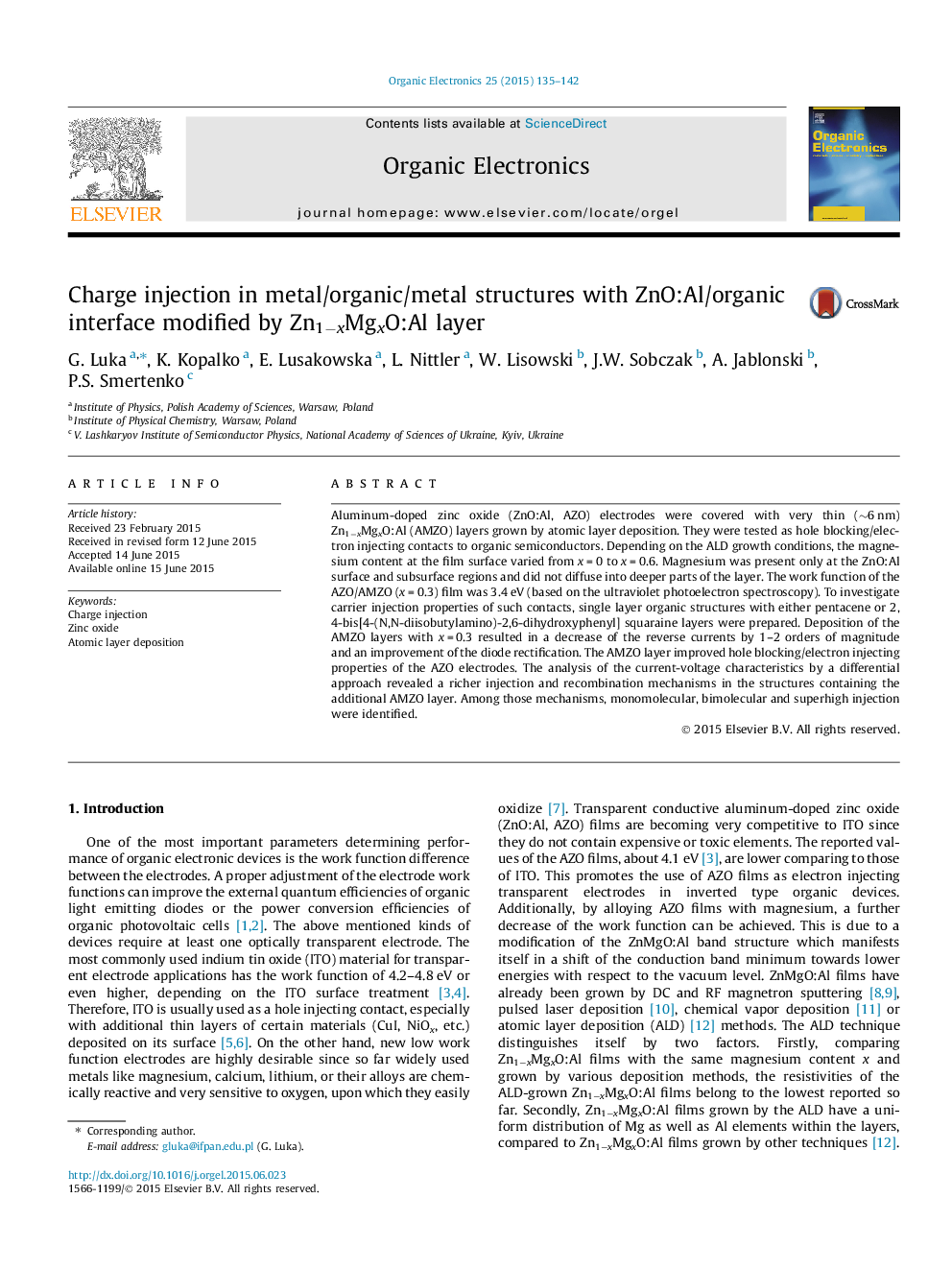| Article ID | Journal | Published Year | Pages | File Type |
|---|---|---|---|---|
| 1263632 | Organic Electronics | 2015 | 8 Pages |
•Surface modification of the ZnO:Al (AZO) electrode by a very thin Zn1−xMgxO:Al (AMZO) layer.•Improved hole blocking/electron injecting properties of the AMZO/AZO contacts, compared to the AZO ones.•Improved rectification of the metal/organic/metal structures having AZO electrode with additional AMZO layer.
Aluminum-doped zinc oxide (ZnO:Al, AZO) electrodes were covered with very thin (∼6 nm) Zn1−xMgxO:Al (AMZO) layers grown by atomic layer deposition. They were tested as hole blocking/electron injecting contacts to organic semiconductors. Depending on the ALD growth conditions, the magnesium content at the film surface varied from x = 0 to x = 0.6. Magnesium was present only at the ZnO:Al surface and subsurface regions and did not diffuse into deeper parts of the layer. The work function of the AZO/AMZO (x = 0.3) film was 3.4 eV (based on the ultraviolet photoelectron spectroscopy). To investigate carrier injection properties of such contacts, single layer organic structures with either pentacene or 2,4-bis[4-(N,N-diisobutylamino)-2,6-dihydroxyphenyl] squaraine layers were prepared. Deposition of the AMZO layers with x = 0.3 resulted in a decrease of the reverse currents by 1–2 orders of magnitude and an improvement of the diode rectification. The AMZO layer improved hole blocking/electron injecting properties of the AZO electrodes. The analysis of the current-voltage characteristics by a differential approach revealed a richer injection and recombination mechanisms in the structures containing the additional AMZO layer. Among those mechanisms, monomolecular, bimolecular and superhigh injection were identified.
Graphical abstractFigure optionsDownload full-size imageDownload as PowerPoint slide
